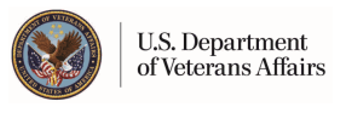How to Protect the Female Heart
Heart disease is the number one killer of women
When it comes to heart disease and stroke, women can have different experiences than men. Did you know that women have different warning signs for heart attacks? Or that women typically have a higher risk of having a stroke? In fact, one in three women dies from heart and blood vessel disease, while one woman dies every minute from a stroke.
Learning the traits of heart disease, stroke, and heart attack can help you, or someone you know, receive the right care.
Symptoms of heart disease
While some women don't have any symptoms until they suffer a heart attack, others may have:
A dull or sharp chest pain
Pain in the neck, jaw, throat, stomach, or back
An irregular heartbeat
Shortness of breath, fatigue, or swelling
Symptoms of a stroke
Compared to heart disease, signs of a stroke differ. You may experience:
A drooping face
Weak arms
Difficulty speaking
If you have any of these symptoms, call 911 for immediate help.
Treatments for heart disease and stroke
There are several effective treatment options for heart disease and stroke, such as:
Surgery to open blocked arteries
Therapies to control risk factors
Rehab programs
Heart attack warning signs
The warning signs of a heart attack can be different in women than in men. Women are more likely to feel the following:
Pressure, fullness, or pain in the chest
Pain in arms, back, neck, jaw, or stomach
Shortness of breath
Nausea, vomiting, lightheaded, or cold sweat
Extreme fatigue
If you are experiencing any of the signs above, call 911 for immediate help.
Knowing your numbers
Heart disease doesn't have to be a scary subject. Eighty percent of heart disease and stroke may be prevented with lifestyle changes and education. Knowledge is power, and it could save your life.
Knowing these risk factor numbers can reduce your risk of heart disease and stroke:
Blood Cholesterol: This number measures the blood cholesterol build-up in your arteries. There is more than one kind, so talk to your health care provider about what each one means and what steps you can take to reduce it.
Blood Pressure: High blood pressure can damage your heart and blood vessels. It's the largest risk factor for having a stroke, but most people don't experience any symptoms. An ideal number is less than 120/80.
Blood Sugar Level: Too much or too little sugar in your blood can lead to diseases such as diabetes. Aim to keep your number less than 100.
Body Mass Index Number (BMI): This number is used to determine if you are at a healthy weight. An ideal number is less than 25.
Once you know your numbers, talk with your health care team. They can connect you with VA information and resources for women Veterans so you can create or maintain a heart-healthy lifestyle.
Maintaining a heart-healthy lifestyle
Challenge yourself and take these steps to keep your heart-healthy way of life:
Reaching and maintaining a healthy weight
Being active on most days
Eating a balanced diet
Quitting if you use tobacco
Avoiding or limiting alcohol to 1 drink a day for women
Managing stress
Keeping blood pressure under control
Manage blood sugar, especially if you have diabetes
Stay on track with your heart health
Remember, it's important for women Veterans to get regular checkups with their providers and to know their numbers so you can stay on track.
My HealtheVet can also help you manage your heart health. You can enter most of your numbers on your own in the Track Health section and make it part of your Blue Button report. You can easily share this with your physicians in or out of the VA system.
Please vote in our unscientific poll. All responses are anonymous.
Read More
Heart Disease and Women: Do You Know Your Numbers?
MOVE! Weight Management Program
Updated January 27, 2020



